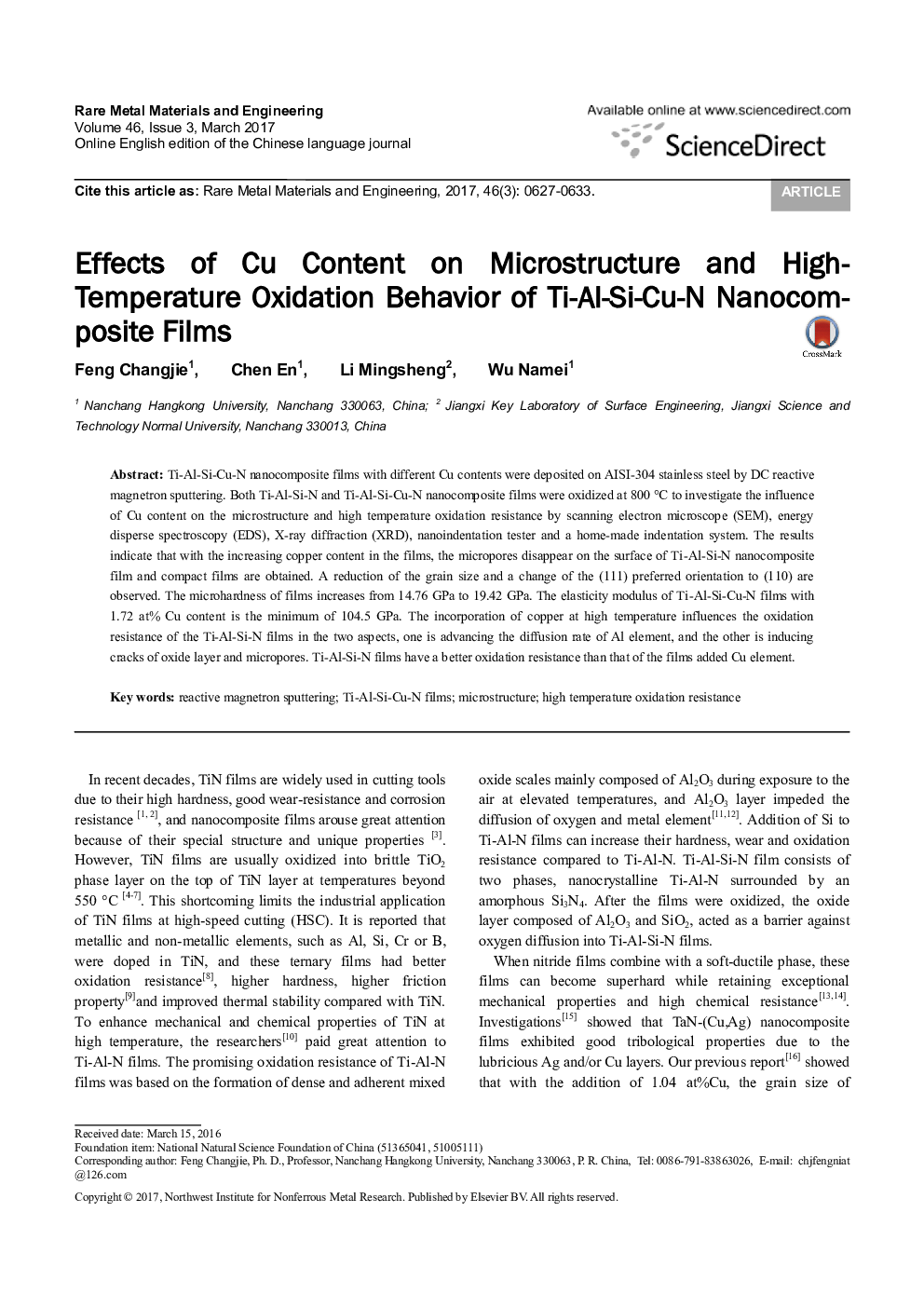| Article ID | Journal | Published Year | Pages | File Type |
|---|---|---|---|---|
| 7210453 | Rare Metal Materials and Engineering | 2017 | 7 Pages |
Abstract
Ti-Al-Si-Cu-N nanocomposite films with different Cu contents were deposited on AISI-304 stainless steel by DC reactive magnetron sputtering. Both Ti-Al-Si-N and Ti-Al-Si-Cu-N nanocomposite films were oxidized at 800 °C to investigate the influence of Cu content on the microstructure and high temperature oxidation resistance by scanning electron microscope (SEM), energy disperse spectroscopy (EDS), X-ray diffraction (XRD), nanoindentation tester and a home-made indentation system. The results indicate that with the increasing copper content in the films, the micropores disappear on the surface of Ti-Al-Si-N nanocomposite film and compact films are obtained. A reduction of the grain size and a change of the (111) preferred orientation to (110) are observed. The microhardness of films increases from 14.76 GPa to 19.42 GPa. The elasticity modulus of Ti-Al-Si-Cu-N films with 1.72 at% Cu content is the minimum of 104.5 GPa. The incorporation of copper at high temperature influences the oxidation resistance of the Ti-Al-Si-N films in the two aspects, one is advancing the diffusion rate of Al element, and the other is inducing cracks of oxide layer and micropores. Ti-Al-Si-N films have a better oxidation resistance than that of the films added Cu element.
Related Topics
Physical Sciences and Engineering
Engineering
Mechanics of Materials
Authors
Feng Changjie, Chen En, Li Mingsheng, Wu Namei,
